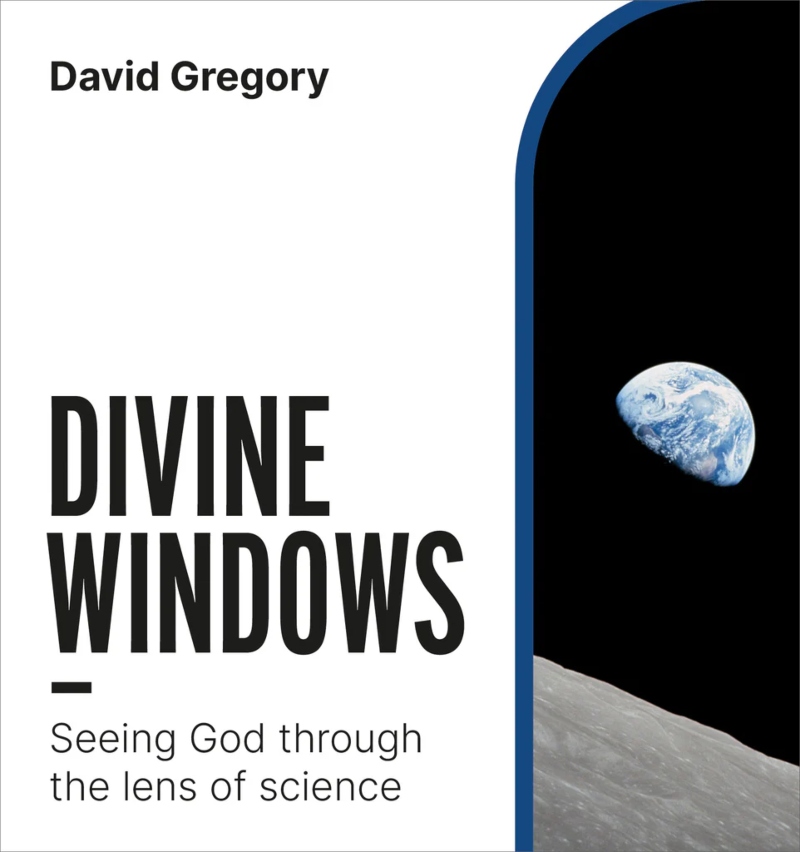Divine Windows, by Dave Gregory
Former President skilfully shows how the findings of science can be a source of wonder which deepens our appreciation of God and his creation
 Divine Windows: Seeing God through the lens of Science
Divine Windows: Seeing God through the lens of Science
By David Gregory
Bible Reading Fellowship
ISBN: 978-1800393318
Reviewed by Rob Ellis
Many of us are familiar with David Gregory’s work in helping us to think about science and faith. The former Baptists Together President has once again skilfully combined his theological know-how with his scientific, and produced here an accessible and attractive book in which he both gives us some reasons to believe that Christianity and science need not be in opposition to one another, and also to understand that the findings of science can be a source of wonder which deepens our appreciation of God and his creation.
The result is an excellent little book. BRF, too, are to be congratulated on the design and quality of the publication, which features high quality photographs as a component. Gregory’s hope is to enable many of us to see both faith and science differently, and perhaps provide a fresh way of “inviting people to encounter God” [p. 14].
The books has two parts. In the first part Gregory sets out some of the theory which will undergird the later material. While this could get fairly technical, Gregory handles matters with a commendable lightness of touch. He explains how, in patterns first begun in the middle ages, people in the western world moved towards ways of looking at the world which tended to reduce the opportunity for us to discern God in and behind the natural world — or anywhere else, for that matter, apart from ‘within.’
Gregory suggests that science may in fact offer what Peter Berger’s famously described as “signals of transcendence” allowing us to see beyond the surface to the deeper meaning of the world around us, a meaning located in God and the divine purpose. While in the west, some writers have spoken of a sacramental quality in creation which have mitigated this problem, Gregory notes that Eastern traditions of Christianity have sometimes avoided it, most obviously through the use of icons: stylised works of art which may become windows through which we see God.
Gregory suggests that what is required is that we might approach scientific knowledge rather more like the way we approach art. If we are to ‘re-enchant’ the world, learn to see it as creation rather than just nature, then Gregory suggests we might have to learn to allow our imaginations to be stretched and perceptions of reality to be challenged. Works of art draw us in, make us respond. Art challenges how we see ourselves and the world around us, reshapes the narratives we tell and think we are part of, opens up new possibilities and discloses hidden truths. Art does things to us.
Dave Gregory is suggesting that we might look at some of the images produced by scientific work in just such a way — and so, be “done to” in a similar way to our encounter with a work of art.
The second part of the book offers eight such encounters — eight images produced by scientific exploration which we might see as icons: images through which we catch something of the divine presence and purpose. The images are stunning, and reproduced to a high standard in the book.
Intriguingly, each of the images has been made artificial in some way in order to make them scientifically useful, as scientists use their imaginations to fuse images together or modify colours. So, for instance, we have a triptych of images of the sun taken in different wavelengths of UV light; and a fusing of two images of sunrise and sunset on Mars; and the enhancing of colours in the phytoplankton bloom.
Each of the images comes with Gregory’s commentary, which helps us to look a them with more comprehension. There is some fascinating scientific knowledge shared in these commentaries, as well as the theological or spiritual insights which lift the images from the realm of information to nourishment.
I would think most people who preach regularly would want to get this book if only to snaffle ideas from these ‘windows.’ In places an eco-imperative is gently given: how appreciating a particular aspect of the created order and our place in it ought to make us more aware also of our responsibility for God’s world. But for the most part it is to the elements of playfulness and wonder which Gregory directs us.
The windows did their work on this reader. It was Rabbi Lionel Blue who I first heard advise that to teach a child to pray, one first has to teach them wonder. I wondered!
If Dave Gregory has the appetite and the time, I suspect there is another volume waiting to be written. This book focuses on images of or from space, but there could be other focuses in biology or mathematics, for example. A more detailed theological discussion could also address some of the issues touched upon but not considered in any detail.
However this book is not primarily a theological argument so much as an exercise in learning to see the world as God’s, learning to see nature as creation. Some theory lays a path to the windows, but what Dave Gregory wants to do is help us to look through the windows at creation with new joy and wonder. Job done.
Rob Ellis, Regent’s Park College, Oxford
Baptist Times, 28/11/2025